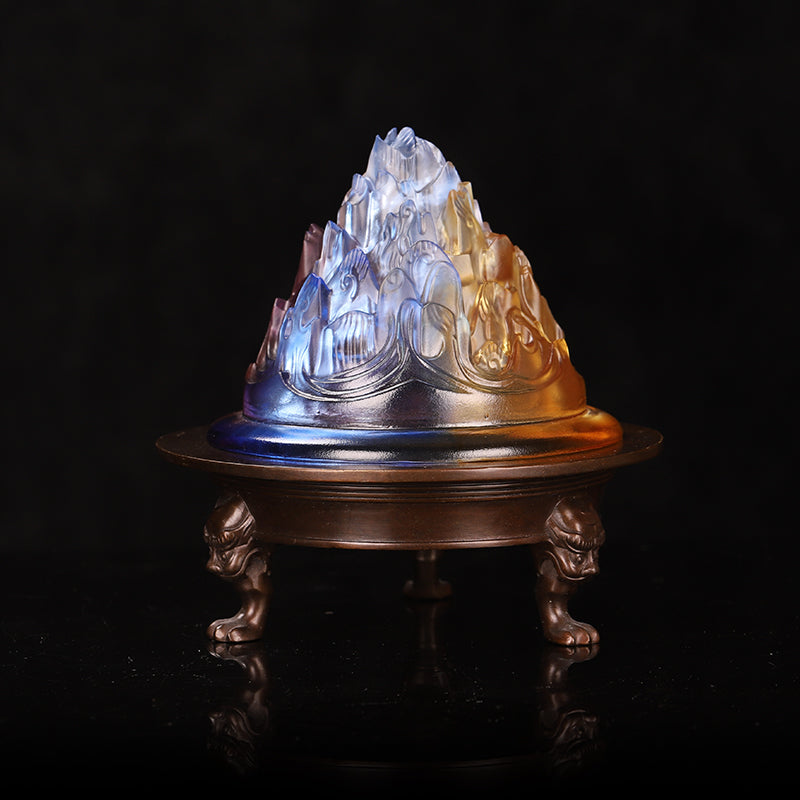For over two millennia, incense has been woven into the fabric of Chinese culture, transcending mere fragrance to become a symbol of spiritual refinement and intellectual pursuit. Among the literati of ancient China, incense was not just a sensory indulgence—it was a bridge between the mundane and the sublime, a medium for self-cultivation, and a cornerstone of social rituals. Let us journey through the incense-laden halls of history and explore how this tradition continues to inspire modern life.
Incense in the Lives of Scholars: A Historical Tapestry
The use of incense among Chinese literati dates back to the Song Dynasty (960–1279 CE), when scholars elevated it to one of the "Four Arts of Life" alongside tea, painting, and calligraphy
. Incense served dual purposes: it purified spaces and minds. For instance, the Xiangxi (香席, "incense gatherings") were exclusive events where scholars gathered to compose poetry, discuss philosophy, and judge rare incense blends. As recorded in Guihai Yuheng Zhi (《桂海虞衡志》), Southern Song scholar Fan Chengda described the ideal incense as having "a clarity like lotus blossoms, lingering without a trace of smokiness"
The Ming Dynasty text Xiang Cheng (《香乘》) by Zhou Jiazhou further details how literati like Su Shi (苏轼) and Huang Tingjian (黄庭坚) blended incense to reflect their philosophies. Su Shi’s Snow in Spring (雪中春信), a recipe capturing the scent of plum blossoms in winter, became legendary for its poetic symbolism
Incense as a Mirror of the Soul
For ancient scholars, incense was a tool for introspection. The Tang poet Li Bai wrote of incense smoke rising like "purple mist", while Huang Tingjian’s Ten Virtues of Incense (《香十德》) extolled its ability to "purify the heart and awaken the spirit"
. Incense also played a role in daily rituals: scholars burned sandalwood to focus during study sessions, and lavender-infused blends to calm the mind before meditation
Anecdotes abound of literati exchanging incense as tokens of friendship. When Su Shi was exiled to Hainan, he crafted a shānzi (山子)—a carved agarwood sculpture—as a gift for his brother Su Zhe, symbolizing resilience and familial bonds
Reviving Tradition: Our Incense Collection
Today, we honor this legacy with our Artisan Incense Set, a curated homage to the literati’s olfactory artistry. Each kit includes:
- Classic Blends: Replicas of historical recipes like E’er Jiu Ju (二苏旧局), a blend of agarwood, sandalwood, and amber inspired by Su Shi and Su Zh.

-
Scholar’s Incense Holders: Handcrafted ceramic holders modeled after Song Dynasty geyao kiln designs, combining minimalist aesthetics with functionality
.
- Zitan Wood Stands: Carved from rare rosewood, these stands echo the elegance of Ming scholar studios.
Why Our Collection Stands Apart
-
Authenticity: Formulas derived from Chenshi Xiangpu (《陈氏香谱》) and Xiang Cheng
- Sustainability: Ethically sourced agarwood and plant-based binders.
- Artistry: Each piece, like our glazed (琉璃) glass incense vessels, is fire-forged using 2,000-year-old techniques
The Incense of Tomorrow, Rooted in Yesterday
As the Song poet Lu You once mused, "Incense is the breath of the soul, lingering long after the flame dies." Our collection invites you to kindle this timeless tradition—whether in quiet reflection or shared moments of grace.

Explore the Artisan Incense Set today and let history’s fragrance inspire your modern journey.





